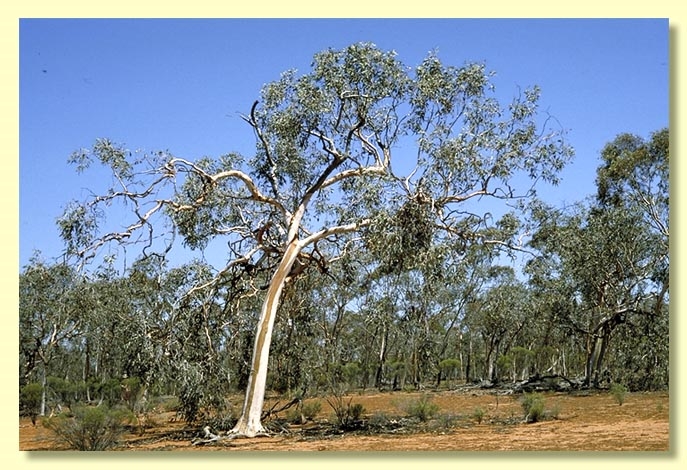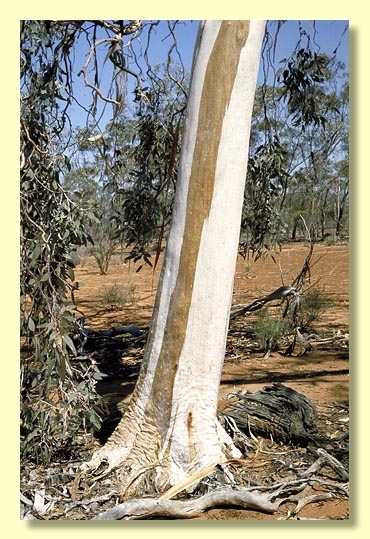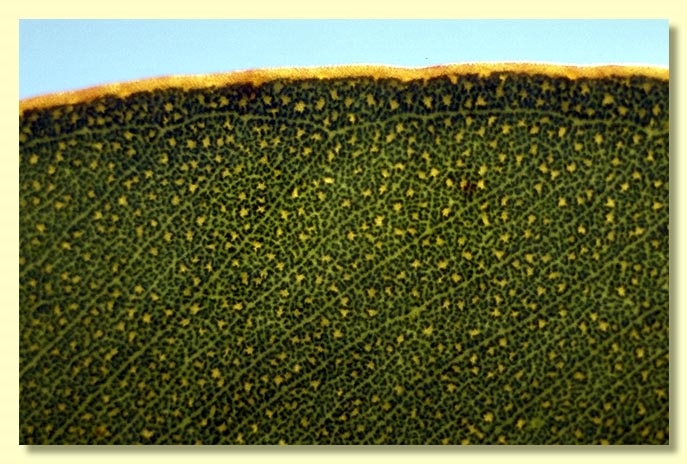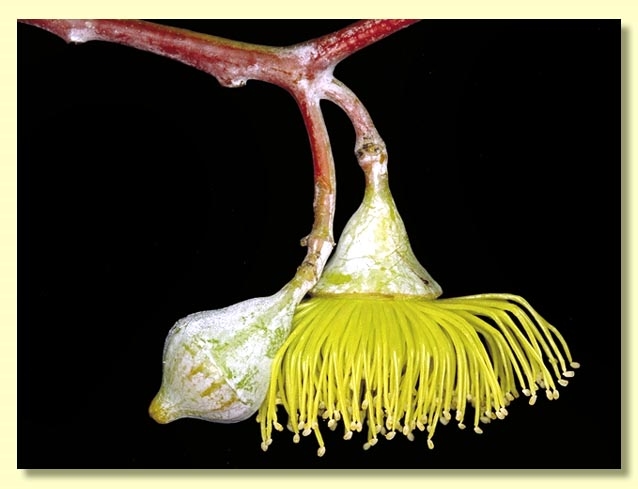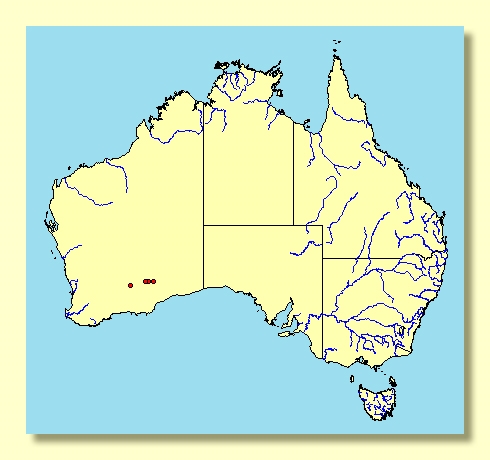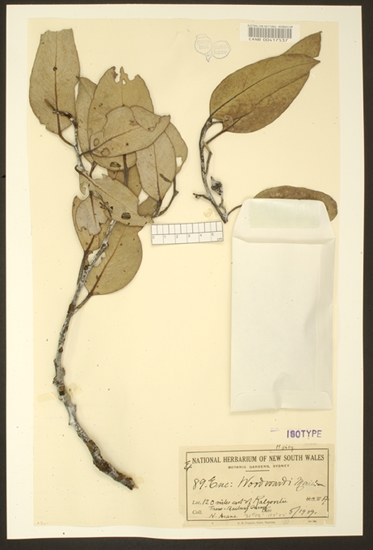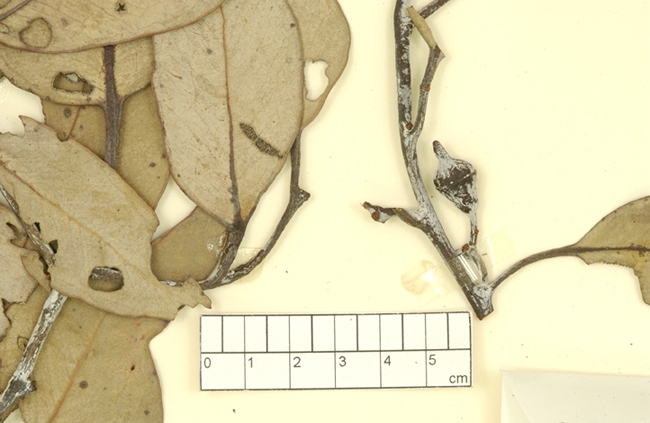Euclid - Online edition
Eucalyptus woodwardii
Eucalyptus | Symphyomyrtus | Dumaria | Rufispermae
Bark smooth, white over salmon to pink, shedding in long ribbons.
Branchlets glaucous, pith glandular.
Juvenile growth (coppice or field seedlings to 50 cm): not seen.
Adult leaves alternate, thickish, petioles 1.5–3.5 cm long; blade broadly lanceolate, 9.5–18.5 cm long, 2–5 cm wide, base tapering to petiole, margin entire, apex acute, concolorous, dull, grey to grey-green but not glaucous, side-veins greater than 45° to midrib, reticulation very dense, intramarginal vein remote from margin, oil glands intersectional.
Inflorescence axillary unbranched, peduncles 1–2 cm long, buds 7 or ?9, pedicellate, pedicels 0.3–0.6 cm long. Mature buds pyriform (1.5–1.9 cm long, 0.8–1 cm wide), glaucous, scar present, operculum beaked (0.6–1 cm long), sometimes faintly radially striate, stamens inflexed, cuboid to wedge shaped versatile anthers, sub-dorsifixed, dehiscing by longitudinal slits, style long and straight, stigma blunt to rounded, locules 4 or 5, the placentae each with 4 vertical rows of ovules. Flowers bright yellow.
Fruit pedicellate, pedicels 0.2–0.7 cm long, cupular to obconical or slightly campanulate, 1.2–1.4 cm long, 1.1–1.5 cm wide, disc descending, valves 4 or 5, rim level to enclosed.
Seeds reddish brown and glossy, 2–3.5 mm long, flattened ovoid and often angular in outline, dorsal surface smooth to shallowly reticulate, hilum ventral.
Cultivated seedlings (measured at ca node 10): cotyledons reniform; stems square in cross-section, quite glaucous; leaves always petiolate, opposite for 4–6 nodes then alternate, ovate, 6.5–10 cm long, 2.5–5 cm wide, dull, glaucous.
Flowering has been recorded in September and October.
Eucalyptus woodwardii is a popular species in horticulture in low rainfall areas. It often hybridises with another commonly cultivated arid zone species, E. torquata. As a consequence seed collected from these cultivated plants often does not show true parental type when grown.
Eucalyptus woodwardii has been recorded as naturalised near Kiata and Kaniva in Victoria, where it has spread from roadside plantings.
A small to medium-sized mallet endemic to Western Australia, known from several populations east from Kalgoorlie in the Karonie–Cundeelee area, which lies in the southern part of the Great Victoria Desert. It grows on sandy rises. Bark is smooth and sheds in long ribbons that often remain partly attached and are conspicuous blowing in the wind. The crowns are pendulous, with dull, grey to grey-green adult leaves, buds beaked and the flowers bright yellow.
In the classification of Brooker (2000) Eucalyptus woodwardii belongs in Eucalyptus subgenus Symphyomyrtus section Dumaria having these features: buds initially with two opercula the outer shed early, stamens strongly inflexed, ovules in 4 rows on the placentae and cotyledons reniform. Within section Dumaria the species belongs to a large sub-group of closely related species (series Rufispermae, 37 described species and subspecies) diagnosed by glandular pith in the branchlets, cuboid to wedge shaped versatile anthers, and by the reddish brown and glossy, flattish seeds which are unique to the series.
E. woodwardii is easily distinguished from all other species in series Rufispermae by its large, heavily glaucous, scarcely striate buds and fruit, the prominently beaked opercula, bright yellow flowers and arid zone habitat.

